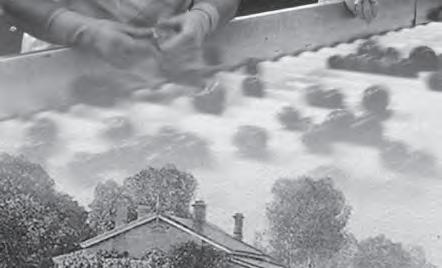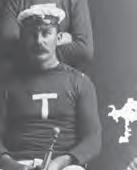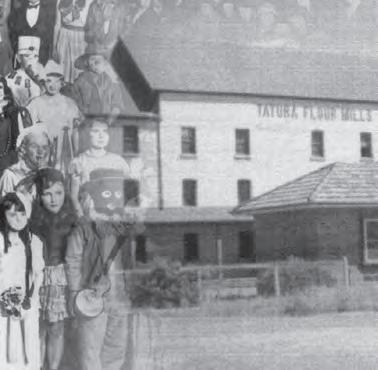






































IF you’re looking for a relaxing weekend escape, just 20 minutes from Shepparton and a two-hour drive from Melbourne, Tatura is an unassuming yet rewarding country escape. This charming town turns 150 years old in 2024, and during October, there are an array of events and happenings showcasing the town’s rich history and culture.
Tatura is an RV-friendly town, which provides convenient respite for van and RV travellers. Visitors can walk down the picturesque main street lined with ornamental pears that light up in fairy lights when the sun goes down, enjoy a bite to eat, live music and a refreshing drink, or explore Tatura’s natural landscapes and rich history during your visit.
Home to butchers, bakers, and bustling small shops, there are a many of treasures to be unearthed.
The water tower artwork honours Tatura’s wartime history, featuring its designer Sir John Monash and vibrant poppies. A short walk away, Tatura Wartime and Irrigation Museum delves into the town’s local history, its role in irrigation and broader national and global impact.
To the west, cemeteries and memorials to the German Wartime Camps commemorate those interned during WWII.
For active recreation and natural wonders, you can explore Cussen Park, which is home to a significant grey headed flying fox population and is popular for bike riders and nature photographers. Central to the town is Mactier Memorial Gardens, which provides a scenic park for relaxation and remembrance. While Lake Bartlett is popular for

fishing and has space to walk the dog, kick a ball or utilise community exercise equipment.
This special commemorative feature explores the captivating history, culture, and attractions of Tatura. The Adviser extends its heartfelt gratitude to the Volunteer staff at Tatura Museum, Arthur Knee, Kevin ‘Gunna’ Ryan, John Maher, and countless other local residents who generously shared their insights and experiences for this publication, and local businesses and organisation that have supported it.
From its wartime history and tranquil waters that have driven Tatura’s prosperity, to local flavours and flyings foxes, this small town has plenty to explore.


THE early survey of the Tatura area set aside the complete square mile bounded by what is now Hogan Street, Ross Street, Murton Road and Dhurringile Road. On March 16, 1874 Tatura was officially proclaimed a township, named after an Aboriginal word meaning 'small lagoon.'
The survey and offer for sale of the first 90 allotments was conducted in 1875. This was the area bounded by Hogan Street, Albert Street, Service and Ross Streets. Each allotment was exactly one-half acre and had access to a street at the front and rear. (from Tatura Streets , by Arthur Knee 1985).
Tatura Primary School opened in October 1874, and the town’s sesquicentennial anniversary coincides with the primary school’s 150th anniversary.
By 1879, Tatura had hotels, a butcher, baker, saddlers, and 30 houses but no public buildings. A railway line was built in 1880, boosting agriculture and allowing farmers to transport grain more easily. In 1886, Tatura became the administrative centre of the Rodney Shire, which was amalgamated with
Discover the local delights and explore this special town steeped in history and community spirit


neighbouring municipalities in 1994.
Metalling of Tatura’s streets began in 1889, paving the way for improved infrastructure. By 1890, the township was proclaimed an urban district with a population of 2,500, contributing to further growth in infrastructure and amenities, including banks and establishment of institutions like the Fire Brigade (1894) and a debating society. ( Tatura: A contextual History, 2010) At the 2021 census, Tatura had a population of 4,955. With several
large land developments planned or underway, Tatura continues to be primed for future expansion.
The 1900s were a time of rapid growth due to Closer Settlement schemes and the establishment of irrigation systems. The water tower was opened on April 24, 1912, and it was the first of its type constructed in Australia which meant water could be delivered via mains connections. (Tatura: A contextual History, 2010)
Gains in industry, agriculture, irrigation


and a resilient community dedicated to the prosperity of the town have all contributed to Tatura’s ongoing growth and success as a hub for business, farming, families and community.
This October as Taturians celebrate this incredible milestone for the township, you are invited to discover the local delights and explore this special town steeped in history and community spirit.
Events coinciding with Tatura’s 150th anniversary are listed on page 9
Officially opening to a big crowd in August 1942 the site was known as Tatura Abattoirs until being purchased by the Gathercole family.
Our family company commenced operations at Tatura in 1985 and has built its strength in serving supermarkets and butchers nationally with a high quality lamb product range. We are now serving international markets including the United States, Asian and Middle Eastern markets with Graebar Park Lamb.
With many upgrades and renovations over the years at our Tatura facility has expanded which has given us the opportunity to support the region with more employment. If you would like to join our dynamic team, drop in and complete an application.

MARTIN STREET, TATURA





PIONEERING WORK... The Australian Draught Horse was bred specifi cally by settlers to suit Australia’s harsh climate and conditions. They were used in colonial and later times for agricultural work, pulling, transportation and forestry. Photos: Courtesy of Tatura Museum


FROM the grazing of squatters in the 1840s to the introduction of irrigation in the late 1800s, agriculture has been the backbone of Tatura’s prosperity. Early land selectors reaped the benefits of fertile soils and the introduction of irrigation in 1889 allowed for diverse farming, from wheat to dairy. By the 20th century, irrigation paved the way for fruit and dairy farming, solidifying Tatura as a premier agricultural hub in Victoria. The Tatura Research Station, established in 1937, played a pivotal role in developing local crop varieties, notably the Tatura tomato, key to the canning industry.




INNOVATION… More than 50 years ago, the foundation for the Tatura Trellis was laid at the Tatura Research Institute in Victoria. Researchers observed that fruit growers were producing more wood than fruit, which came at a significant cost. Additionally, their methods of soil management and tree irrigation often led to ine cient water use and widespread tree losses during wet seasons. It became clear that a complete shift in thinking was needed to develop long-term solutions that would make fruit growing, especially in the Goulburn Valley, sustainable, profitable, and viable. In 1973, a team of researchers from various disciplines collaborated to devise a comprehensive blueprint for orchardists to follow, a model still used globally today.















AGRICULTURE... Draft horses and workmen pictured during construction at Waranga Basin. Waranga Basin was the first major dam constructed in Australia. The first stage of construction began in 1905 using only picks, shovels and horse drawn scoops. At the time, the 8.8 metres high and seven kilometre long embankment was the largest project of its kind in the world!


FARM SENSE... The Tatura SmartFarm is Australia’s leading horticulture SmartFarm research facility e ectively linked to the Mildura SmartFarm, enabling research and innovation to deliver high-quality fruit from orchard to export market. Tatura Smart Farm is pictured from above. Photo:

AUSTRALIA’S leading horticultural SmartFarm research facility is located in Tatura, enabling research and innovation to deliver highquality fruit from orchard to export markets. The SmartFarm develop, use and demonstrate new applications of agricultural technology to achieve increases in marketable yield, product value and efficiency in pears, apples, stone fruit and almonds. One such innovation, which is used globally, was the Tatura Trellis – a close-planting system for tree fruits, in which trees are

trained to form a V-shaped canopy. Through innovative farming techniques developed in Tatura, Victorian growers are poised to meet the exacting quality expectations of consumers in domestic and export markets.



50+ years of serving our agricultural neighbours & community.



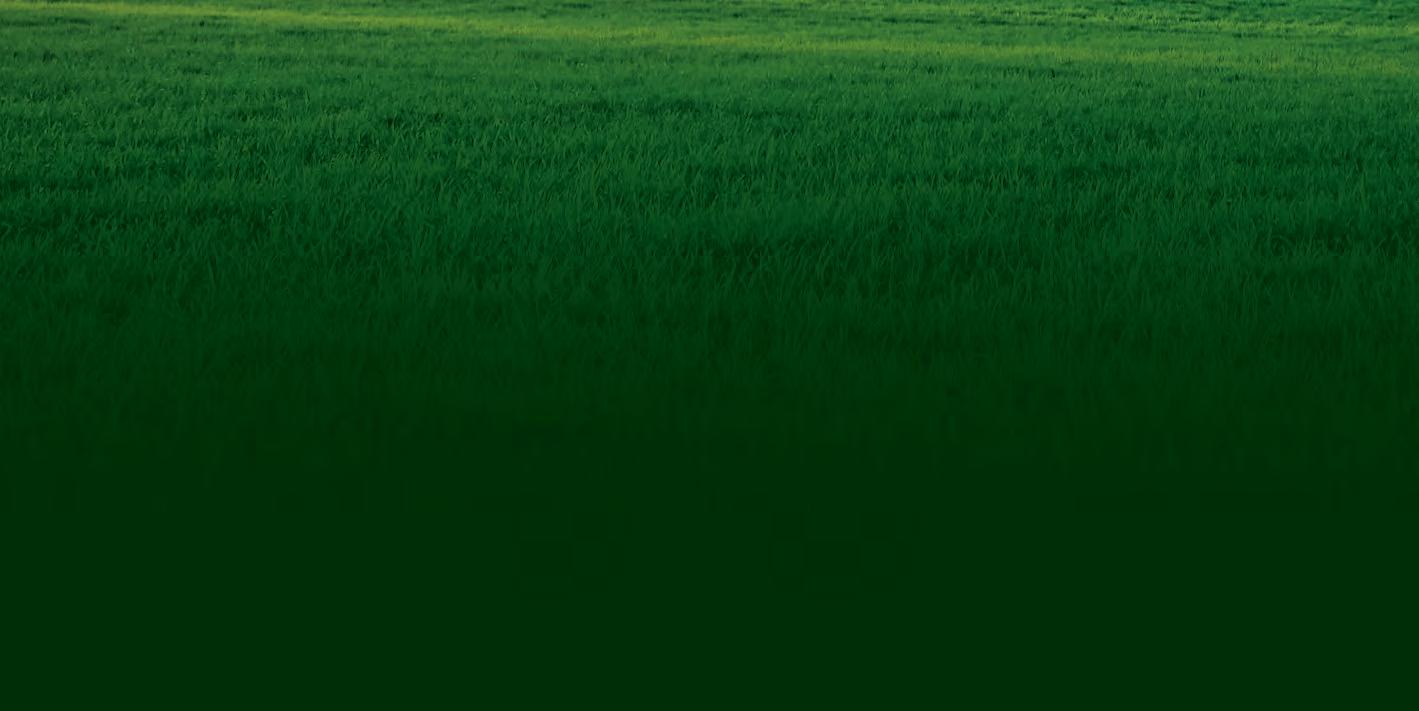
•Stockfeeds - small & bulk lots
•Animal feeds - domestic & farm
•Fencing supplies
•Animal health
•Seed supplies and so much more

WITH a foundation of good old-fashioned service and honest advice, Tatura Farm Supplies celebrated its 50-year milestone last year, a testament to its enduring values.
gain media exposure.

Founded in July 1973 by Bruce and Delphine Minns at 195 Hogan Street, the site was formerly home to C.J. Mitchell and Co Hardware. Today, it houses the Tatura Police Station.
Bruce joined Combined Rural Traders (CRT), becoming known as “Your local bloke from CRT.” He established an advertising committee that helped CRT outlets in Victoria
According to Caroline, Bruce’s daughter and current owner, this innovative approach was effective: “It gave ‘local blokes’ an edge over competitors.”
Caroline joined the business in 1990 after working with her father during school holidays. In January 1996, they relocated to Ross Street, near the former Tatura Saleyards.
“Moving there was ideal for growth, but we faced challenges, especially during droughts,” Caroline recalled. “Dad worked hard with committees to promote Tatura Park for horse
events and was instrumental in the early days of International Dairy Week.”
Bruce passed away in 2010 after a twoyear battle with cancer, leaving Caroline to continue the business.
“Many doubted I could succeed in a maledominated field,” Caroline said. “After Dad's passing, I lost many customers, but with hard
work and support from my husband Martin and our staff, we persevered.”
Like the town itself, Tatura Farm Supplies has evolved, now catering to agricultural, domestic and broader trade sectors with a wide range of products, including fencing supplies, work boots, and feed for various animals.
FOR more than three decades, thousands of people from around the world have descended on Tatura for International Dairy Week (IDW), the largest annual dairy conference and sale in the southern hemisphere. IDW is nationally and internationally recognised as being amongst the top five cattle shows in the world, beginning as a Holstein show and sale and an all-breeds youth show in 1990. Until 1996, judging was held under the shade of a large gum tree and by the year 2000, the first stage of a $2.6M upgrade to facilities was completed, including a new arena and improved cattle wash and housing, which are still used today. This same year, the first dairy animal from Australia was sold to the USA at the jersey sale. It is one of many milestones in agricultural success derived from IDW. a Tatura legend, long-time Rodney Shire and Greater Shepparton
councillor and Order of Australia Medal recipient in 2018, Kevin ‘Gunna’ Ryan, said the development at Tatura Park was his proudest achievement. “It started off with a caravan park with a couple of cattle yards. And, to see what it is now, you know, we can park 1,000 vehicles on-site now.”
In 2020, it was announced that the Tatura Park Exhibition and Equestrian Complex would change its name to the “Kevin ‘Gunna’ Ryan Outdoor Arena”, with the new signage erected earlier this year.
“We’ve built it up over the years with the help of volunteers, and it’s not just about parking for events like Dairy Week, but it’s a multipurpose facility now. It’s used for anything from dog trials to horse shows and motorbike events. It’s a real community asset and knowing that I’ve had a hand in making that happen, is something
I’m pretty chuffed about,” he said.
“International Dairy Week is probably the largest of the events that are held at TatPark, and it is the third largest dairy show in the world, only beaten by Canada and the United States, and it continues to grow.
“The income from Dairy Week and TatPark is not just for Tatura, but benefits the wider area,” Kevin explained, with local businesses and even businesses as far as Cobram supplying equipment to IDW. “People even come to Dairy Week one day early so they can go to Shepparton, go shopping and have a look around Shepparton. They come from all over Australia.”
International Dairy Week runs annually at Tatura Park in January. 2025 will mark the 35th anniversary of IDW.
FoodWorks Tatura supports the responsible service of tobacco and alcohol products. Persons under the age of 18 will not be served tobacco or alcohol. Offers available from Wednesday July 17 - Tuesday July 23, 2024, unless sold out prior. Limit rights reserved. Offers exclusive














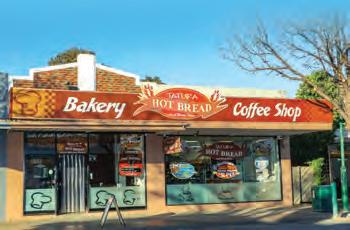

















As Tatura celebrates its 150th birthday, GV Health would like to take the opportunity to reflect on nearly a century of healthcare service provided to our community.
Tatura Hospital and Parkvilla Aged Care Facility has been integral to the community since the early 1930s.
The hospital was established in 1933 as part of the Bush Nursing Movement, which began in 1908 to provide medical care in rural areas. The community played a vital role in its establishment, with local fundraising efforts, including selling bricks for a shilling each.
The hospital’s foundation stone was laid by Mrs R. Beggs, State President of the Country Women’s Association (CWA), and it was officially opened by Sir James Barrett, then President of the Bush Nursing Association.
The hospital received a $2 million upgrade in 2000.
Over the years, the hospital has continued to grow, adapting to the community’s needs while maintaining its strong ties to the town’s history.
In the last year and a half, the Tatura Hospital and Parkvilla Aged Care Facility has added solar panels, HVAC air-conditioning and hoists in every room as it continues to evolve and support the Tatura community.
The hospital thanks the Ladies Auxiliary, which finished up this year, for all their hard work, support and donations to the facility over the years.
Tatura Hospital and Parkvilla Aged Care Facility looks forward to serving the Tatura community for many more years to come.




Michelle Flannigan has dedicated 24 years to the Tatura Hospital and Parkvilla Aged Care Facility and is one of the longest-serving staff members.
Starting her career in administration, Michelle transitioned to nursing a decade later, driven by a desire to help others.


“Aged care is incredibly rewarding,” she said.
“These were people who often got forgotten, but they deserved dignity and care just like anyone else.”
Michelle has witnessed the facility’s evolution firsthand, noting that while technology has advanced and improvements have been made, the heart of the service—the people and the care they provide—has remained the same.
“We are still a community-based hospital and nursing home, which is wonderful,” she said.
“It’s great for the people that live here, it makes the transition a lot easier.”
At 93 years old, Mary Lalor is the longest-staying resident of Parkvilla Aged Care Facility, having lived there for nearly seven years.
A Tatura native, Mary found comfort and care at Parkvilla despite the challenges of aging.
“They never refuse anybody anything,” she said.
“They are very good and all very nice.”
Mary said she appreciated the routine and care from familiar faces.
Mary’s family also praised the facility and said the care they had seen was the best, even compared to more extensive facilities in the city.
Activities like craft sessions and outings keep Mary busy, and she even shares her baking skills with the staff.





One of Tatura’s most iconic landmarks is the Dethridge waterwheel, which greets visitors at the town’s entrance. Originally developed to control water flow along the irrigation channels, the waterwheel symbolises the town’s success, much of which can be attributed to an extensive irrigation system. This infrastructure, combined with the area's fertile soil, has created ideal conditions for thriving dairy farms, cereal crops, fruit and vegetable production, as well as sheep and cattle farming.

These agricultural activities have in turn supported the growth of key local industries, including a tomato processing facility, a dairy production plant, and an abattoir. Tatura’s prominence as a hub of agricultural innovation is further highlighted by its role as Victoria’s leading centre for research into irrigation management, and as the headquarters of GoulburnMurray Water, the regional authority overseeing water resources.
WELCOME... Visitors to Tatura are greeted by the Dethridge waterwheel, an innovation in irrigation which has largely contributed to the town’s prosperity. Photo:


HOLE...



1881. Photos: Courtesy of Tatura Museum


UP until the early 1870s, the small settlement located near the fresh water well was known as The Whim (water pump). The Whim was established by the Winter family of Dhurringile as a water supply for sheep and other stock. A water reserve was established around The Whim, and it was the source of water for Tatura during its initial growth (c 1880).
This was the northern boundary of James Winter’s estate and was called “Nelson Gate.”
The town Whim was near the Brown Street and Albert Street roundabout.
One of the first buildings constructed in Tatura was Heaphy's Whim Inn. The inn

CHEERS... Publican’s license for the Whim Inn.
was located on the southwest corner of the intersection now known as Dhurringile Road and Hogan Street, where Tatura Country Motel is presently located. There is now no trace of the building to the left.




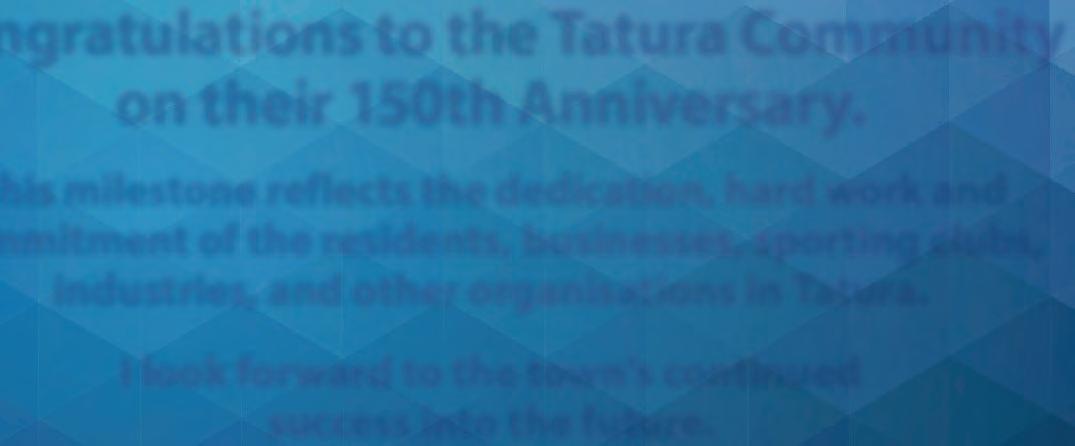



JOIN Taturians in October as the town commemorates Tatura's 150th anniversary with celebrations filled with events for all ages. From school activities and community gatherings to historical exhibitions and special events, there's something for everyone. Discover the rich history of Tatura, reconnect with friends and family, and celebrate this milestone together.
OCTOBER 16...
Parkvilla/Tatura Hospital will host a special 150th celebration morning tea with residents and their families. Photos and memoriabilia of the old hospital will be on display. Address: 64-68 Park St, Tatura. Phone: 5824 8400
OCTOBER 17...
Tatura Library will have a Craft & Coffee session 10.30am to 12.30pm. Come along and make cards and new connections. Address: 12-16 Casey St, Tatura. Phone: 1300 374 765
OCTOBER 18...
Sacred Heart Tatura students will take part in various activities related to the 150th celebration this month, including designing a ‘Tatura, Our Town’ postcard along with a message about what makes Tatura a great place to live, learn and grow; tours of the Tatura Museum; and a whole school mass on Friday, October 18. Parents and families of school children will receive invitations from the school to attend the liturgy. Address: 69/54 Hogan St, Tatura. Phone: 5824 1841
OCTOBER 26...
Tatura Primary School celebrations will start at 12pm and run through until 5pm with food and drink vans, activities for all ages, market stalls and more. Visitors can have a look around at the school, catch up with past friends and explore the history display featuring photos, articles and memorabilia. The school choir and bank will begin proceeding at 3pm and an after party has

LOCAL HISTORY...
Explore local displays and learn more about Tatura’s history at the Tatura Museum.








been planned at Tatura Hotel. Prior bookings are required for the after party (mention Tatura Primary School 150th when you book by phoning 5878 2211). Address: 33 Service St, Tatura. Phone: 5824 1684
OCTOBER 26...
Various community groups have gotten involved with the Tatura Primary School 150th celebrations, including Rodney CWA who will hold a food stall and the Tatura Lions Club, which have organised the Tatura Gift on the school oval, with various locals taking part in the short distance run dressed in 1920s attire. Don’t miss history in action, or the chance to connect with and support local community organisations on this special milestone.
OCTOBER 27...
Tatura RSL Sub-Branch are hosting an open day, 10am to 3pm at the Tatura RSL (Senior Citizens Rooms) at 2 Memorial Place. Visitors

are invited to explore a unique display of memorabilia, carefully curated over the years. Local veterans will be present to share stories and offer insights into the rich history of the Tatura RSL and its contributions to our community. This is a rare opportunity to hear firsthand accounts of the experiences and sacrifices made by our servicemen and women. For further details, or if you’re interested in joining, please reach out to president, Rod Schubert at 0419 924 610, or secretary, Mark Sommers at 0407 297 474.
DURING OCTOBER...
Be sure to visit Tatura Museum (49 Hogan Street) to learn more about the town’s history. Volunteers are presenting a special exhibition commemorating Tatura’s 150th anniversary (showing October 19 - 27). Open 1-3pm daily, and a treasure trove of all things Tatura, you can learn more about the town’s heritage and contributions from dedicated volunteers and explore local memorabilia. Phone: (03) 5824 2111





TATURA owes its vibrant community and rich history to the contributions of many pioneers, but few left a legacy as enduring as Thomas Hogan. Hogan Street, the town’s main thoroughfare, stands as a tribute to his life and efforts.
Born in Ireland, Thomas Hogan arrived in Victoria as a young boy of 13. His father was drawn to agriculture and moved the family from Melbourne to Gisborne, where Thomas married Miss A. Thompson in 1868. Though starting out as a contractor supplying stone for some of Melbourne’s most iconic buildings, it was his move to Tatura in 1873 that cemented his place as one of the town’s earliest pioneers. Much of Tatura was built on land once owned by Hogan himself.


In the early days, Hogan’s residence was little more than a modest hut at the back of a timber yard, but over time, he witnessed the growth of Tatura from wilderness into a prosperous town. Known for his generous spirit, Hogan donated the land for the Roman Catholic church and Presbyterian, as well as the Mechanic’s Institute.
His influence extended far beyond land development. Hogan was instrumental in establishing the Tatura Agricultural Society, a justice of the peace, and a member of the Rodney Shire Council at its formation, where he served as president. He was also deeply involved in the Rodney Irrigation Trust, helping bring vital knowledge from Mildura to improve irrigation systems in the district.






The first Tatura Show was held on his own ground on Hogan Street, and his lifelong love for racing led him to become a foundation member of the Tatura Racing Club, where he served as starter for 29 years and was later honoured with life membership. His contributions to the town also included serving as chairman of the Tatura Cemetery Trust, trustee of the recreation reserve, and as an original shareholder in the Tatura Butter Factory, a key industry in the town’s economic history.




While it would be impossible to recognise all the




that have contributed to the early success of Tatura in this feature, it is without a doubt that Mr Hogan’s vision, dedication and leadership have left an indelible mark on the town.
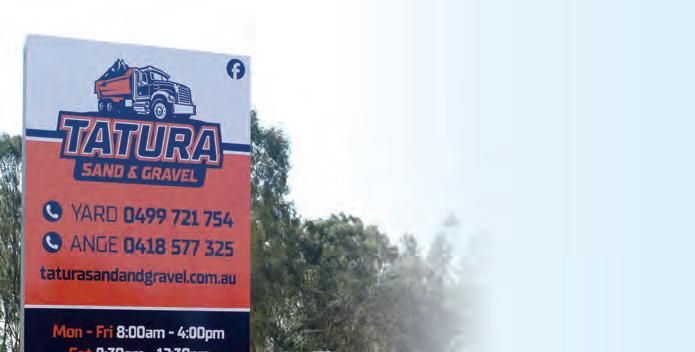












THE provision of an abundance of recreational land within the Tatura township has been one of Tatura’s main assets, one for which present residents continue to reap the rewards of with many sporting fraternities, social and service clubs, and space to walk, ride and play.
By the mid-1880s, Tatura had outstripped in growth all the other older towns within the Shire of Waranga and the Shire of Rodney, proclaimed in 1886 ( Streets of Tatura , Arthur Knee). The young township continued to prosper as the centre of the Shire, which included Mooroopna, Kyabram, Toolamba and Byrneside.
Horse racing, which had originally taken place on Thomas Hogan’s property, was in 1890 granted a home at the racecourse and recreation reserve in the southwest corner of the township. Whilst rectangular, the measurements for this adopted reserve are considered very odd, and the reason for this unknown.
A water channel built by the United Echuca and Waranga Waterworks Trust once supplied a dam on the site of today’s Lake Bartlett. The channel ran from Ross Street along the racecourse’s northern border



and shaped Tatura’s development
A rubbish tip was an essential part of any community and in the 19th century, tips were not controlled by state or local regulations. Generally, they were selfestablished in some low but readily accessible area. The Tatura Tip in the 1880s, according to Mr Knee’s historic recount in Streets of Tatura , was the site now occupied by the Tatura Bowls Club.
Because of its early usage as a tip, and its generally low nature, in 1889 it was gazetted as “Public Gardens”. The traditional rectangular grid design of 10 chain (210m) blocks with a 1½ chain (30m) wide road reserve was retained for the layout of the




Public Gardens, and for the original 10 acres set aside for the Agricultural Show Yards. The importance of these community areas and investments is undeniable. This precinct has become a vibrant hub for sports and
events. The Rotary Club’s recent installation of fitness equipment at Lake Bartlett further enhances the area’s appeal. Tatura Soccer Club’s championship win this year is a testament to the thriving sports culture.


TATURA resident John Maher fondly recalls the rich aroma of tomatoes being processed into sauce at Rosella and lively memories of the Tatura Show from his childhood. As the eldest of six children and a direct descendant of the town's founding Maher family, John takes pride in the legacy, with a street named in their honour.
Charles Maher was born in 1788 in Tipperary, Ireland. His wife Anne Maher (nee Cahill) was born in 1792. They were married in June 1811 and had six children. Their son John, the youngest of the clan, married Margaret Ryan and they moved to Boston, USA in 1850. After a short stay they had one son, who died as an infant. They then decided to travel to Australia and had a second child, Charles, who was born on the ship in September 1866, four days before landing in Australia.

of 19 Charles married Florenda Pinniger from Ballarat and they moved to Tatura to start a new life in 1873. Due to hard times and crops failing, they were to be sold up by the bank. Charles stopped ploughing to watch the sale of the property and on arrival, found two fellow pioneers, Matthew Cahill and Thomas O’Reilly were the successful bidders. Without dismounting their horses, they told Charles to farm the land until his debt was cleared and it would be his again.
After some good years, the Maher’s purchased land on the west of Tatura, now known as Winter Road.

Charles and Florenda had 10 children: Margaret, Mary, Anne, Sarah, John, Alice, Patrick, Nora, Kathleen and Frances. Mary married Jeremiah Ryan to grow the Ryan dynasty that resides around Tatura to this day.
John remained a bachelor, became a councillor and had Maher Street named after him. John and brother Pat continued to run the farm, and they imported Clydesdale stallions from Scotland and New Zealand and would take the stallions around the district to service the mares. Both brothers were good horsemen, became jockeys and are life members of the Tatura Racecourse.
Pat married Lorna Hanley after the sale of the hotel, and they retired across the road to 54 Hogan Street. Frances married George Bartlett, an engineer in the district and a relative of the Bartlett soft drink dynasty. Notably, George designed the Murchison bridge. They had four children – Jack, Mary, Margaret and Frank. Mary still resides at Parkvilla aged care at Tatura Hospital, and Margaret resides in her home in Kew, Melbourne, and frequently visits her hometown of Tatura.
Charles grew up in Epping where his father John started a wheelwright business. The family then moved to Kilmore and at the age
Charles' parents, John and Margaret, moved to the area to be by their son. John died in 1883, and Margaret passed away in 1905 and both are buried in the Tatura Cemetary. Tatura Cemetary is on a sandhill on Winter Road and is still used today by the local community, on land donated by the Maher family.
In the 1920s, Pat purchased his own farm on the outskirts of town on Rushworth Road, where the original home still stands. The Maher’s sold the family farm and Pat’s farm in the 1930s and purchased the Commercial Hotel in Tatura, which they ran for over 20 years and sold to Dick Warton in 1959.
Pat and Lorna had two children, Florenda and Bernie. Florenda married Brian Cummins from Toolamba and are both buried in the Tatura Cemetary. Bernie Maher married Judy Warburton and they had six children together. John Maher, their eldest son, still resides and runs a business in Tatura. He is married to Sandra Scouler and they have two sons, Daniel and Robert, who are the sixth generation to the town.
























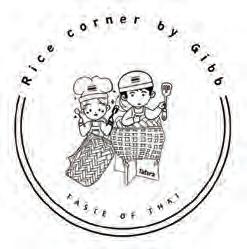



DURING World War II, seven camps were established in the Tatura area—four for civilians (internees) and three for Prisoners of War (PoWs). What made this area unique in Australia was the close proximity of all seven camps. Tatura was selected due to its access to fresh water from the Waranga Basin, its convenient location near the railway system, the availability of substantial food supplies, and the safety of being more than 160km inland from the coast.
The first enclosures were basic barbed-wire compounds with tents for accommodation, but over time, these were replaced by more permanent army huts. Following the war, under the Australian Displaced Persons Scheme, some 200,000 Europeans were brought to Australia. While Bonegilla near Albury became the main migrant camp, Tatura was notable for being the first Displaced Persons camp in Victoria. Many families



SECRETS OF THE PAST... Tatura Museum houses a unique collection of items from the seven WW2 Prisoner of War and Internment Camps in the Tatura and Rushworth areas. It also has information on the history of Irrigation in the Goulburn Valley as well as local industries and family histories of Tatura and district. Photos: Courtesy of Tatura Museum
resided there while awaiting employment and more permanent housing.
The Tatura Irrigation & Wartime Camps Museum has played a crucial role in preserving this history. Their extensive collection of artefacts and memorabilia tells the rich story of these camps and the broader Tatura district. Open daily from 1-3pm, the museum showcases donations from
respect and dignity, while maintaining strong connections to both their community and fellow servicemen and women.
FOR nearly 120 years, the Tatura RSL SubBranch has steadfastly supported local veterens and their families. Its mission is rooted in the belief that every veteren deserves to live with




Tatura RSL invite all to their special open day on October 27, 10am to 3pm, at the Senior Citizen Rooms (2 Memorial Place, Tatura), where you can explore displays of unique memorabilia and hear from local veterans.
“We highly encourage everyone to tour the Robert Mactier Memorial Gardens, a peaceful




















SERVICE...
WWII Tatura intake. Tatura’s history is deeply connected to both world wars. During World War I, the town saw many local men head to the battlefields, temporarily halting sports and industry. The war e ort at home included first aid classes and Red Cross branches. In WWII, Tatura was home to POW camps. The post-war era brought prosperity to Tatura, with many immigrants settling and contributing to the agricultural industry, while local war memorials remain a lasting tribute to those who served.
former internees, PoWs, their families, and the community.
Visitors can see 54 works of art by Leonhard Adam, sketches by Georg Rosenkranz, hand-crafted wooden items, and clothing made during internment. There are also children’s toys crafted for Christmas and birthdays, metalwork such as a handmade lathe, musical instruments, theatre programmes, puppets, and books and documents created during and after internment.
Beyond the wartime camps, the museum houses detailed collections on local figures, industries, businesses, and the history of irrigation in the Goulburn Valley, offering a comprehensive view of the district’s history. While we can only touch on Tatura’s diverse past within the pages of this magazine, the museum invites you to explore these stories in more depth by visiting their collection in person.
place for reflection. The garden features plaques honouring over 1,000 locals who served in conflicts ranging from the Boer War to World War I, World War II, and Vietnam. Among those names, 600 served during World War II, when Tatura’s population was just 2,000,” said Tatura RSL president, Rod Schubert.
The open day is a fantastic way to learn more about Tatura’s wartime efforts and about the RSL’s mission. New members are always
welcome, including current or former service personnel, their families and community supporters. For further details, or if you’re interested in joining, please contact president Rod Schubert at 0419 924 610, or secretary, Mark Sommers at 0407 297 474.
Tatura RSL is honoured to be part of Tatura’s 150th anniversary celebrations and look forward to welcoming you to their Open Day.
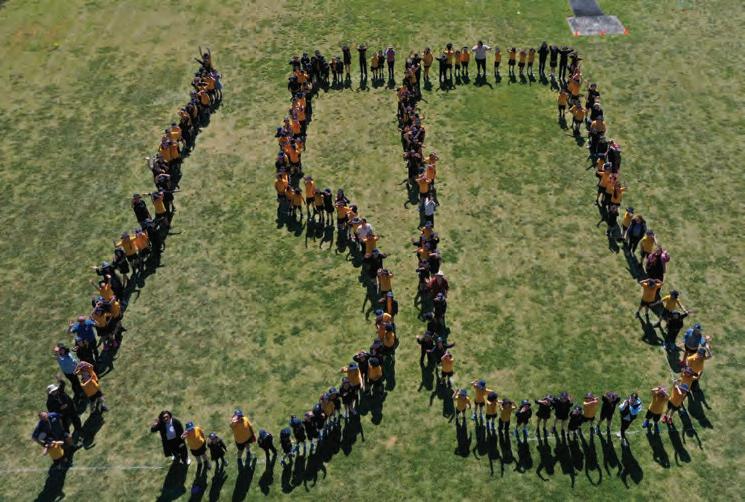

Founded in 1900 by the Sisters of Mercy, Sacred Heart School in Tatura began as a small, faith-based institution serving the local Catholic community. Despite early challenges typical of rural schools, the Sisters’ dedication to education and spirituality helped the school grow steadily. By the mid-20th century, lay teachers joined the faculty, modernising the school's approach while maintaining its Catholic values. Over time, the school expanded its facilities and curriculum to provide a well-rounded education.
Today, Sacred Heart remains a cornerstone of Tatura, blending tradition with modern and contemporary education while fostering faith and community spirit for over a century.




















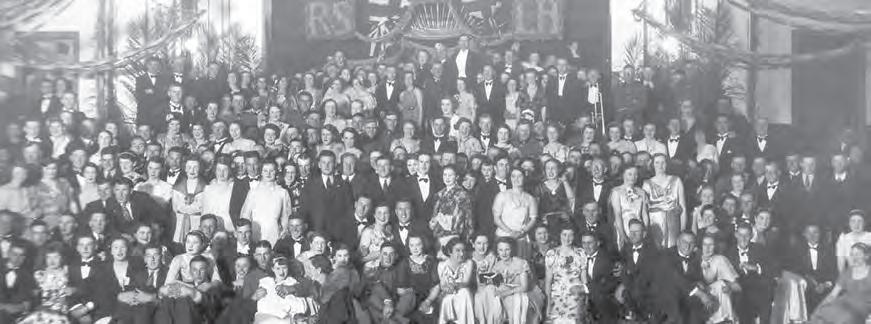































































FOOTBALL has been an integral part of Tatura’s community spirit since the late 1800s, with local games reported as early as 1885. By 1894, Tatura joined the Goulburn Valley District Football Association (GVDF), competing with nearby towns. Football provided a unifying force during the early years, and despite hiatuses during both World Wars, and again during the COVID-19 pandemic in 2020-21, Tatura Football Netball Club (TFNC) has remained a central part of town life.
In the early days, Tatura was a formidable team winning its first premiership in 1898, three in a row
from 1900 to 1902, runners up in 1903 and then winning back-to-back premierships in 1904-1905; the longest winning streak in Tatura Football Club history.
In 1905, registered club colours were red, white and blue, including a navy blue guernsey with white braces and a red sash and matching stockings. The red, white and blue colours have always persisted.
GVDF association would become the Goulburn Valley Football League (GVFL) in 1914. Tatura Football Club played an instrumental role in the growth of GVFL in its first 30 years
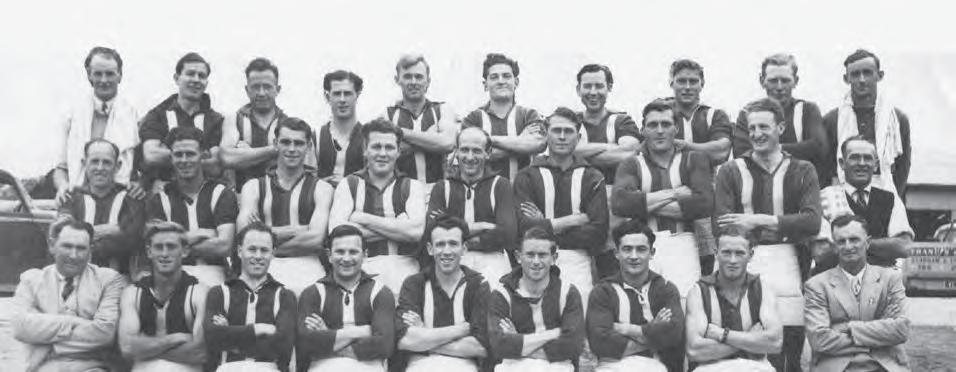
on and off their field, as a premier team and League administrator. (125 Years of the Tatura Football Netball Club, 2019)
Game day was Wednesdays until 1939, when play was moved to Saturdays. Prior to this controversial move, some local players were playing Wednesday games for GVFL and
Saturday games for VFL.
A and B Grade netball competitions began in 1981, with both teams winning the premiership the following year.
Since its inception in 2014, the GVL Hall of Fame has recognised Tatura's long history of excellence, with 11 Tatura inductees recognised for their
football, netball, and administrative achievements. The club has continued to thrive, adding a women's football team in 2019 and celebrating its 125th anniversary that same year. Now in its 130th year, Tatura Bulldogs remains the longest-serving club in the GVL and a huge part of the town.
THE Tatura 200 Charity Bike, Ride & Walk, fondly known as the TAT200, was launched by the board of Tatura Milk Industries as a way to extend its community support.
The event, now in its 14th year and set to take place Saturday, November 16, 2024, has become a vital fundraiser for local charities and groups within the Goulburn Valley. Since its inception in 2008, the TAT200 has raised over $1M, all of which has been donated to support community organisations, charities, and initiatives.
Following its return in 2023 after a COVID-19 hiatus, the event continues to attract participants eager to contribute to this impressive fundraising legacy through rides and walks, including the prestigious 200km ride.
PUTTING THE ‘FUN’ IN FUNDRAISER... Since the Tatura 200’s inception in 2008, the event has raised over $1,000,000 for local charities, organisations, and community groups in the Goulburn Valley.



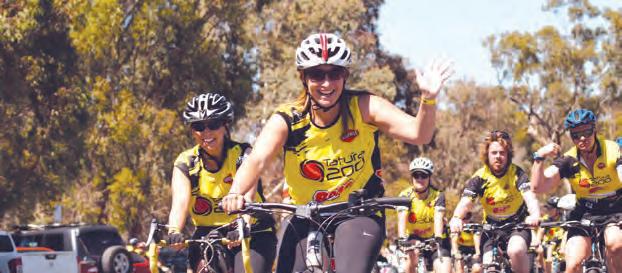


































IN April 1909 it was reported that, ‘...the golf craze has ‘struck’ Tatura and an endeavour is being made to form a club here. Some of the fair sex have taken the game up and may be seen tramping round the outskirts of the town with their bundles of sticks,” (Tatura and the Shire of Rodney, WH Bossence p. 260).
Later the same year, the first official club was formed with “Hogan’s Paddock”, an area north of the railway line. In 1913, the club transferred to an area consisting of the Lake Paddock, the reserve on which the present Lake Bartlett and Tatura Primary School form part, and the eastern part of the racecourse, which it shared with the Tatura Racing Club and Plumpton Club.
The clubhouse, which was located on the south corner of Martin St and O’Reilly



Rd (present site of Tatura abattoirs) was demolished when the club eventually moved to Hill Top. The final round at the old course was played September 20, 1964, after which a large gathering joined to sing ‘Auld Lang Syne’ (50 Years of Hill Top, Jeff Baker).
While capital to grow the club were limited, there was a strong desire to purchase their own freehold and construct a golf course.
Late in 1963, a property of 137 acres on the north side of town, called Hill Top, became available. Through community efforts and working bees, the former dairy farm was transformed into a beautifully laid out golf course complete with seven bowling greens. It was officially opened in 1966 by Deputy Prime Minister John McEwan, in front of dignitaries and a crowd of several hundred.


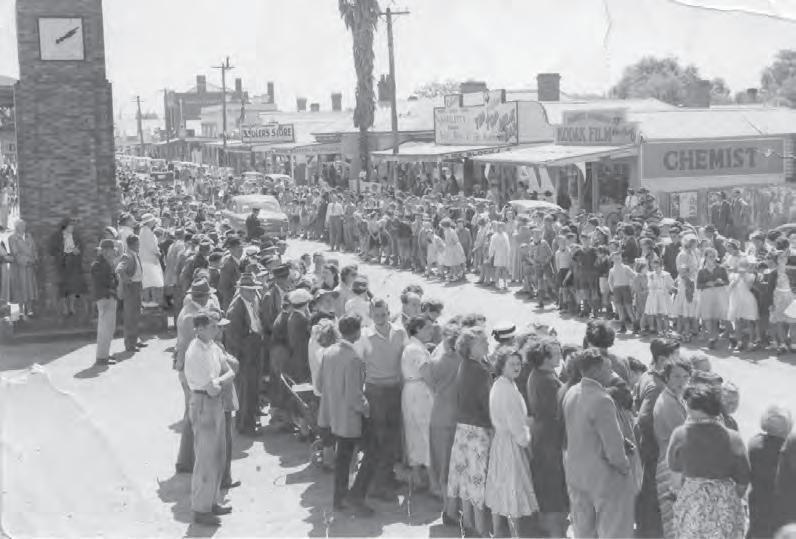
SPORTS have played a pivotal role in the Tatura community. A testament to this was the town’s inclusion in the Olympic torch relay during the 1956 Melbourne Summer Olympics. The occasion drew crowds of spectators, and local children enthusiastically showered the torchbearers with rose petals. (Shepparton City Council Heritage Study Stage IIB)
Originally, the torch was scheduled to pass through Albury-Wodonga, Wangaratta, Shepparton, and the Goldfields. However, unseasonably heavy late spring rains forced a last-minute change of plans. Swollen waterways and blocked roads made portions of the original route impassable, including the planned detour
through Byrneside, Stanhope, and Corop. (‘Northern Victoria Burning Bright’, Bendigo Regional Archives Centre 2021).
To ensure the torch's safe journey, several torchbearers had to be transported by army truck through floodwaters on the Midland Highway. This detour bypassed Tatura, Rushworth, and Colbinabbin. Despite the challenges, the Olympic spirit prevailed as the torch made its way towards Melbourne, much to the excitement of locals who got to be part of the fanfare.
The Olympic torch would return to Tatura a second time, for the 2000 Sydney Summer Olympics.











FOR almost 60 years, the Country Women’s Association (CWA) has been a vital part of the Tatura community. Following the closure of CWA Younger Set in 1966, Tatura Younger Setters became full members of CWA and had a name change to “Rodney”, honouring the local council of the day. The current Rodney CWA Branch membership is 23. There has been a Rodney CWA Junior Branch for the last 20 years with 10 junior members at present.
Through community projects, fundraising efforts, and educational programs, the Rodney CWA has made a significant impact. Members have provided essential items to local charities, supported community groups, and raised funds for various initiatives.
The branch has also played a crucial role in promoting education and cultural understanding. Members have participated in state-level

leadership roles, represented Tatura at the Melbourne Show, and studied countries around the world.
As Tatura celebrates its 150th anniversary, the CWA continues to be a cornerstone of the community, providing support, friendship,
and a sense of belonging.
Sheridan (Kyabram).
THE original shopfront of IGA, is part of the site associated with Dr James Park. Dr Park had a surgery and residence at Walsh Street from 1922 until his death in 1938. The brick clock tower in Hogan Street is a memorial to Dr Park who was known for his kindness and charity. His interest in the welfare of children encouraged the building of a kindergarten room at the Presbyterian Sunday
School, where a memorial photo was later unveiled. On his death flags were flown at half-mast on all public and other building in town.
Information about Dr Park has been sourced from various places, including the Tatura Museum, and Tatura: A Contextual History 2010 ‘Greater Shepparton Heritage Study Stage 11B’.






















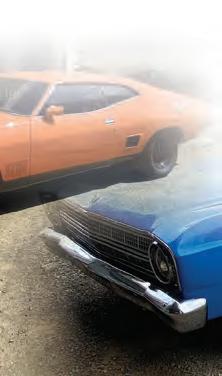





TATURA’S rich heritage extends beyond its buildings and infrastructure. This year, two special trees were added to the National Trust’s Register of Significant Trees, highlighting the town’s natural wonders.
The GV Tree Group, a local non-profit organisation, spearheaded the effort to have these trees recognised. Inclusion on the register signifies their exceptional value and importance.
The Moreton Bay Fig in Mactier Gardens, a towering specimen with a 4-meter diameter and an estimated age of 130 years, is a standout. Its impressive size and form make it scientifically significant, while its historical presence in the community adds to its social value. It has been a part of the
GV Tree Group successfully had two trees in Tatura added to the Register of Significant Trees. One of which is the huge Moreton Bay Fig in the southeastern corner of Mactier Gardens, which has been part of the community for over 120 years. Photo: Deanne
Je ers
Tatura community for over a century and was once in a prominent position near the railway station and the local park where many community events took place.
A lemon-scented gum on Hopkins Street also earned a place on the register. This 56-year-old tree, with a diameter of 1 meter, is notable for its size being one of the largest circumference measurements on the Register, and its contribution to the local streetscape. Its unique features and healthy growth make it a prime example of why this species should be planted more widely.
These two remarkable trees add to Tatura's growing reputation as a town that values both its heritage and its natural environment.










JOHN Dixon Love and his wife Sarah arrived in the Tatura district in the early 1870s, settling two miles north of the town on a property named Moyola, believed to be in memory of their home in Ireland. They had three sons – Harry, John and Will – and two daughters, Sarah and Isabel, none of whom married.
Isabel sold the family property in 1949
after the death of her sister Sarah. When she passed in 1953, Isabel left a trust fund to build homes for elderly and needy residents on Tatura. The first units opened in Service Street in 1965, followed by Moyola Hostel for the frail elderly in 1982.
The latter project was adopted by Tatura Rotary Club and other service clubs in the area, resulting in $70,000 being raised for the local contribution to the overall cost of around $430,000.
John Dixon Love (Junior) also served as secretary of the Tatura Turf Club for 15 years, honoured with a plaque at the Mechanics’ Institute in 1959, in recognition of the legacy he left to the Institute.
The Love family’s lasting impact is felt through their contributions to Tatura’s elderly care and community institutions.













TATURA’S prosperity is largely thanks to its ability to attract large industry to the small town. Kevin ‘Gunna’ Ryan, Tatura legend and former councillor for Greater Shepparton and the Rodney Shire, said, “All the councils in the old Shire of Rodney days worked on the principle of a town is only as good as the industry it has got – that has an impact on jobs, on young people.


enterprises such as hotels, a butcher, and a bakery began to emerge.
BUTTER FACTORY... Tatura Butter is considered by many chefs to be the best butter to cook with. It was first made in town back in 1907 and today the factory is still an iconic part of the town, producing 80,000 tonnes of dairy products every year.
“In those days, you had to go away to learn anything, and of course, most people never came home. Concentrating on the industry within the town gave people something to come home to.”
Farming and the secondary agricultural industries are the leading sectors in Tatura and throughout its 150-year history. As the settlement grew in the 1800s, small
A cannery was established in 1919, though it was later relocated due to complaints about the odour, but in 1946 iconic Australian brand Rosella would make its home in Tatura in a significant gain for the food processing industry.
The post-war economic boom saw many gains for industry, with local brands like Bartlett’s Cordial, which was made in Tatura, experiencing success and providing both local jobs and locally produced products that became a staple in the community.
While some brands have closed or have left the town, today industry is still well alive in Tatura. In addition to many small businesses in retail and hospitality sectors,


Tatura is home to Gathercole’s Abbatoir,w Tatura Milk, Unilever and Goulburn Murray Water’s headquarters, as well as trades, legal services, real estate, and a whole lot more, generating jobs, productivity and economic

growth for the town.
“There’s no doubt that everything has come from industry – that’s why Tatura is such a powerful town, because of its industry,” Kevin said.




















































































WHAT’S a country town without its local pub and the warmth inside? Lagozzino Top Pub in Tatura is celebrating 150 years in operation, coinciding with the town’s sesquicentennial. Owned by the Lagozzino family for 56 years, the pub’s legacy runs deep. Dominic Lagozzino bought the hotel in 1968, and today, his son Frank and wife Jenny proudly carry on the tradition.
Originally known as the Commercial Hotel, the singlestorey wooden building on the corner of Ross Street and Rushworth Road was replaced in 1922. Over time, the hotel has seen many leaseholders, but in 2011, Frank took over full ownership, and since then, he and Jenny have run the business with passion, open seven days a week bringing a diverse array of food and drinks to Tatura, in an environment where people of all walks of life are welcome.
Keeping a business alive for over half a century is no easy feat, but Frank and Jenny feel immensely grateful to the wonderful community who have kept the doors open throughout many ups and downs. Surviving challenges like the Covid pandemic, the Lagozzinos have continuously adapted and improved their offerings.


“We turned out whole business around and improved everything – ourselves, the food, our services, and our offering the community where we wanted to give back to others who were struggling,” said Jenny.
Community commitment is at their heart. “We’ve raised so much money for community projects, community members struggling, major organisations involved in health




and care of people suffering from major illnesses and this is just so rewarding personally for us and something we won’t ever cease,” said Jenny.
“Love your local is a great statement for Tatura, as everywhere you look you just find the kindest, nicest people, amazing stories and lively pubs – in life, you need nothing more!”






























TURN BACK IN TIME... Hogan Street pictured in the 1950s. Photo: Courtesy of Tatura Museum



Hogan Street
Thomas Hogan was a selector and owner of land on the northern side of Hogan Street, extending from Ross Street to the eastern boundary of the now Presbyterian Church property. Hogan owned the land the Commercial Hotel was built on, known as the Top Pub, and was a Councillor with the Shire of Rodney from 1886-1910. Hogan Street was originally known as Goulburn Road and made up the northern boundary of the township.
Brown Street
William M. Brown was a councillor with the Shire of Waranga prior to the severance and the constitution of the Shire of Rodney. He continued as a councillor with Rodney until his resignation in 1890, and his distinguished service was remembered by the naming of Brown Street.
Fraser Street
The Honourable Simon Fraser, a contractor responsible for the construction of many of Australia’s railway lines, stood for, and was elected to the Rodney electorate in 1874. Mr Fraser subsequently became one of the first Senators in the newly-formed Commonwealth of Australia.
O’Toole Street
Named in the 1950s in recognition of the O’Toole family, particularly Patrick O’Toole, a popular identity and solicitor. Pat was a man with a keen sense of humour and interest in the town’s cultural life and art, tennis and bowls. His brother Jack was interested in racing and football, and his knowledge of stock was in great demand as a buyer for various firms. A fact that no doubt influenced the council in its naming for the street fronting the saleyards.
Albert Street
Like many other streets in the state at that time, Albert Street was named in memory of the very popular Prince Consort to Queen Victoria.
Casey Street
James Joseph Casey was the Minister for Lands and was undoubtedly involved in the proposal to establish the township, and happy to have his name perpetuated in what was intended to be the main street of the new township.
Francis Street
James Goodall Francis was the Premier of Victoria at the time of Tatura’s proclamation.
Bartlett Street
John Barlett was the manager and later owner of the soft drink manufacturing business that set up in Service Street in the early days of Tatura. He became a councillor of the Shire of Rodney from 1921-1931.
Francis and Martin Streets
The extension of Francis Street was named Martin Street in recognition of the father and son who successively occupied the position of Shire secretary from 1900 to 1958. Thomas Martin was revered as a “thorough gentleman”, his son William “Plugger Bill”, retained a keen interest in horses and always found time to breed and race a few trotters.
Hastie Street
Formerly Wilson Street, the name was changed by the council in 1957, because of the duplication caused by the naming of Wilson Avenue. The change of name caused some brief concern because of the close friendship between the Wilson and Hastie families, but this was soon forgotten. Hastie was so called after Thomas Hastie, councillor of the Shire of Rodney from 1921-1965. Tom was an extremely popular personality, a farmer, footballer and involved in all aspects of the social and sporting life of the town. The Goulburn Valley Football League premiership trophy is named the T.J.E. Hastie Cup, in memory of the League’s longest serving president.
Kerford and Service Streets
George Brisco Kerford was the solicitor-general of Victoria, and James Service was the treasurer. Both later became state premiers.
O’Reilly Road
Thomas O’Reilly was an original selector of land south of Tatura and his descendant “Mick”, a popular bachelor, and direct descendant, lived for some years in Ross Street at the western end of the road now bearing his name.
Maher Street
The Maher family, like the O’Reillys, were original selectors of land in the Tatura district, however, the name Maher Street honoured the service to the Rodney Council of Cr John Maher from 1953-1961. Jack for many years owned the Commercial Hotel and was renowned for carrying a mini beer glass in his waistcoat pocket, so that he could go the distance with his many friends without having the need to drink too much.

Archie Pyke was another popular figure around Tatura in the earlier part of the century. Archie owned one of the first steam wagons in Tatura, and carted many cubic yards of crushed rock from the rail siding to construct roads in the area. In later years, he owned a garage “opposite the clock,” and could be relied on to be able to “get you going” if you had the misfortune to suffer a mechanical breakdown – not a frequent occurrence in the 1930s. Archie lived in the house fronting what is now Pyke Street.
Dr Alexander Park was a much loved medical practitioner, in whose memory the Hogan Street clock tower was erected. Dr Park bought a number of lower allotments fronting the north side of Hogan Street. In 1920 Park Street was created including those lots and with a number of residential allotments fronting the new street.
Cussen
Martin Cussen was a dynamic personality in the 1880s, a councillor of the Shire of Waranga, the first president of the Shire of Rodney, chairman of the Rodney Irrigation Trust and a Member of Parliament.
Ross
In 1872, Angus Ross was able to purchase from James Winter, owner of the Dhurringile Estate, land on which to erect a store and post office. This building, and Sheehan’s Hotel on the northeast corner of the township, were the first in Tatura. At the time of the township's sale, Angus was able to get freehold title to the site of the store which fronted the Murchison/Tatura Road. As virtually the founder of Tatura, it was logical that he should give his name to Ross Street.
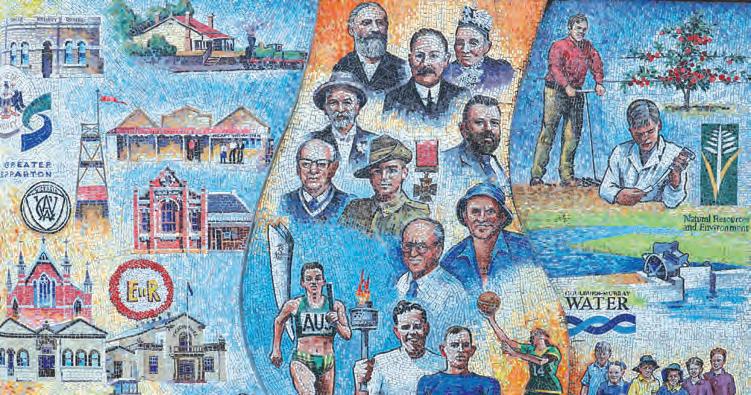
THE 1954 Royal Tour marked the first visit by a reigning monarch to Australia, and it was an occasion that drew vast numbers of residents from across the district. Queen Elizabeth II, then just 27 years old, captivated the crowds as people lined the roadsides. In his book, Tatura and the Shire of Rodney, W.H. Bossence said, “it is doubtful if any event can be compared with it.”
Families arrived with folding chairs, thermos flasks, and picnic hampers in tow, settling in for the event. Some even travelled from Tatura to Rochester, hoping to get a second glimpse.
Arthur Knee, a life member of the Tatura Museum, who was the Rodney Shire engineer at the time, vividly remembers the lead-up to the royal visit.
Reflecting on the event in the Tatura Area Bulletin (Sept 2022), Mr Knee recalls the flurry of activity, particularly the involvement of several 'faceless men' sent to ensure that everything ran smoothly.


that I could just accommodate all Tatura’s population under the shade of the huge Moreton Bay Fig tree growing in front of the railway station, but this was something different.”



“They had organised for all the district residents and school children to come to Tatura to see the Queen. We were to expect a crowd of over 10,000,” Arthur said. “I had been thinking
Preparations were in full swing. Ross Street, the only fully sealed road entering Tatura from the east, was widened. Star pickets and ropes were purchased to form barricades, security vantage points were mapped out, and then came an unexpected accident—a young woman collecting the mail crashed her car into the station building, where the Queen was to


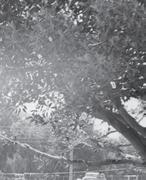

depart by train to Echuca.
A new station building was constructed in its place, but the entryway wasn’t suitable for the Queen’s arrival. With some ingenuity, worn-out timber sleepers from the railway line were used to create a ramp, allowing the Queen access to the platform. The ramp was covered in carpet, and bunting was added for effect.
“On the big day, everything was in order, archways in place, star pickets and rope down both sides of Hogan Street, the crowd readily waiting,” Arthur said. “Despite all the hiccups, everyone seemed pleased with the day.”
A lasting tribute to the royal visit remains in Tatura’s Memorial Park—a boulder from the Dookie Hills, inscribed with the words: ‘Her Majesty Queen Elizabeth II and H.R.H. the






































